It has been a fascinating experience to arrive in Russia and explore St Petersburg.
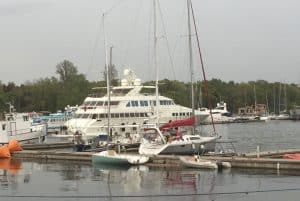 We berthed at the Central River Yacht Club next to a gin palace that made Antipole look like its tender. ‘Yacht’ here has a rather different meaning. There are smart restaurants filled with immaculately dressed younger people enjoying excellent cuisine. Here in Russia the ‘well to do’ are doing very well. Yet many public facilities and even the yacht club are quite decrepit and staffed by those who would not find a place in the restaurants. Public services are of mixed standard – we have been warned by several sources not to drink water from the public supply.
We berthed at the Central River Yacht Club next to a gin palace that made Antipole look like its tender. ‘Yacht’ here has a rather different meaning. There are smart restaurants filled with immaculately dressed younger people enjoying excellent cuisine. Here in Russia the ‘well to do’ are doing very well. Yet many public facilities and even the yacht club are quite decrepit and staffed by those who would not find a place in the restaurants. Public services are of mixed standard – we have been warned by several sources not to drink water from the public supply.
We walked some miles to a Spar supermarket near a major military academy. Near the close of the working day the streets were filled with uniformed soldiers and airmen. We pushed our trolley around the supermarket alongside the uniformed and reflected on the distrust and suspicion between Russia and the West. Yet we all peruse the same goods on the shelves and queue together at the check-out.
St Petersburg is quite extraordinary. It is vast and the central area contains numerous palaces built for the well-to-do before the revolution. Your ranking in society seemed to depend on the size and opulence of your palace and how close it was to the Tsar’s Winter Palace.
We spent a day following a walk and orienting ourselves, after which we had a day’s rest (during which we did boat maintenance tasks).
On Saturday we visited the new Fabergé Museum and saw an amazing collection of Russian silverware and fine articles. The highlight was a collection of Fabergé Easter eggs, which were produced for the Tsar as gifts to his wife and mother each year, each taking a year to make. The extraordinary wealth and sheer opulence of all this is mid-blowing, especially when one considers the hard life of the common folk. Of course, when this gap gets too extreme, you get revolution, as the Romanovs eventually discovered to their cost. (We reflect that the gap between the haves and have nots in Great Britain is at its greatest since 1914.).
After lunch we took a tour of the canals on a river boat – a good way to see many of the palaces in a city which, like Venice, had the canals as its essential arteries. We then visited the amazing Kazan Cathedral where Tony was entranced by the service taking place with all its mystical orthodox rituals and singing.
On Sunday and Tuesday we spent two days in the Hermitage Museum. Nothing can prepare you for the incredible wealth of art and artefacts held in over 360 rooms, many of which are themselves sumptuous treasures. It is quite extraordinary.
- The Jordan Staircase
- Kolyvan vase
On our second afternoon we visited the relatively new exhibition rooms in the nearby General Staff building. This holds the collection of impressionist and post-impressionist works with plenty of space for more of the vast stock of works still in store. Eventually we were saturated by yet more rooms filled with priceless masterpieces.
In between our days in the Hermitage, we visited the St Isaac’s Cathedral. This extraordinary church is vast and impressive. Its French designer was not actually an artitect. Its baroque interior has been beautifully and vividly restored, starting at a time when it was the State Anti-reglion Museum. It has been a museum since the revolution but services are held in it once again and one was taking place at a side alter during our visit. The view from the colonnade over much of St Petersburg is also stunning.
- St Isaac’s dome interior
- St Isaac’s iconostasis
The St Petersburg metro system is remarkable, very efficient, clean and, to us, economical, costing ca. 50p for an unlimited journey. The M5 route we used to get to the city centre is deep down in the bowls of the earth with very long escalators. Many stations have a grandure befitting the city and are clad in marble, relieved by mosaics or other art. We travelled to the most remarkable ones – here is a selection:
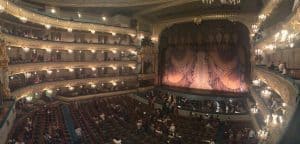 A highlight for us has been an evening at the Mariinsky Theatre, home of the Bolshoi and other renowned companies. The theatre is splendid, with a huge stage and orchestra pit. Above the stalls the boxes rise vertically, giving excellent views.
A highlight for us has been an evening at the Mariinsky Theatre, home of the Bolshoi and other renowned companies. The theatre is splendid, with a huge stage and orchestra pit. Above the stalls the boxes rise vertically, giving excellent views.
We saw the classic ballet Sylvia, which was new to us, apart from the celebrated pizzicati. It had its debut in 1876 and was the first to break away from the established formula for ballet and introduced a wider variety of dances and themes. At the time Tchaikovsky’s Swan Lake had just been introduced and Tchaikovsky called his own masterpiece “poor stuff in comparison”. Tchaikovsky said “I was ashamed. If I had known this music earlier then, of course, I would not have written Swan Lake”.
We were thrilled with the sets, the outstanding music and the wonderful dancing. We drank Russian Champagne during the interval.
The next day we visited the Russian Museum in the beautiful Mikhailovsky Palace. This houses works of Russian art. We especially loved the ancient icons, dating from when Prince Vladimir brought Orthodox Christianity from Byzantium to Rus. Some of the later works were monumental in size.
The next day we visited the Church On The Spilled Blood, so-called as it was built on the spot where Tsar Alexander II was mortally wounded by an assassin.
This extraordinary church was built in a traditional orthodox style with its interior completely covered in mosaics. It took twenty four years to complete. While certainly impressive, it did not, for us, have the special feel of the other churches we visited. Perhaps the vast number of visitors overwhelmed it.
On our last day we visited the Peter & Paul Fortress. When Peter I (Peter The Great) started to build the Russian Empire, he realised he needed access to Europe and wanted a window to the Baltic. Peter waged the Great Northern War to drive the Swedes out of the Baltic coast and establish a first stronghold at what is now St Petersburg. The city was founded on 27th May 1703 and it so happened that we visited on the anniversary, which is a great holiday here, know as City Day.

At the centre of the fort is the cathedral of Saints Peter & Paul, with its wonderful tall spire and a carillon of bells. The cathedral is decorated with beautiful Italian marble of varying hues. It became the resting place for the Romanov dynasty and most of them, and only Romanovs, are buried here.
It was interesting to observe that in post-revolutionary Russia the Tsar’s family holds interest and respect again.
The last Romanov Alexander II and his family were murdered in 1919 (The word murdered is used rather than executed). The remains that have been found have joined with their forebears and been interned in the cathedral with full funeral honours .
The fort also contains interesting displays and exhibitions.
- Romanov tombs
The last place we visited was the Museum of Political History, situated in a mansion used by Lenin as his base during the Revolution and from whose balcony he gave many speeches. The museum is an honest presentation of the history from the Revolution through to Vladimir Putin’s rise, and does not flinch from describing the disastrous consequences of many of the policies and their human cost.
It was interesting to read how, even in 1996, propaganda and manipulation of the media were used by Yeltsin to the extent that his election was regarded as fraudulent. Nothing much new in 2016!
The Daily Mail labelled the judges who ruled that it required Parliament to authorise the triggering of Article 50 to be enemies of the people. Did the editor understand he was drawing on the philosophy of Stalin who invented the phrase and, according to no less an authority than Khrushchev:
“used the term to render it unnecessary that […] errors be proven; this term made possible the usage of the most cruel repression, violating all norms of revolutionary legality, against anyone who in any way disagreed with Stalin […]. This concept “enemy of the people” actually eliminated the possibility of any kind of ideological fight or the making of views known on this or that issue, even those of a practical character.”
There we have it.
One evening we were joined by our agent Vladimir and his wife Alla for dinner at a mainly vegetarian restaurant. It was a most enjoyable occasion. Vladimir has been working hard getting us permission to make our next passage northwards up the coast. This Saturday evening he has finally got clearance for us to proceed, so we can use the only fair wind window for the next week.
That’s it for now. Love to all.
Tony & Ynskje
NB Your can click on the photos to enlarge them, as usual here.

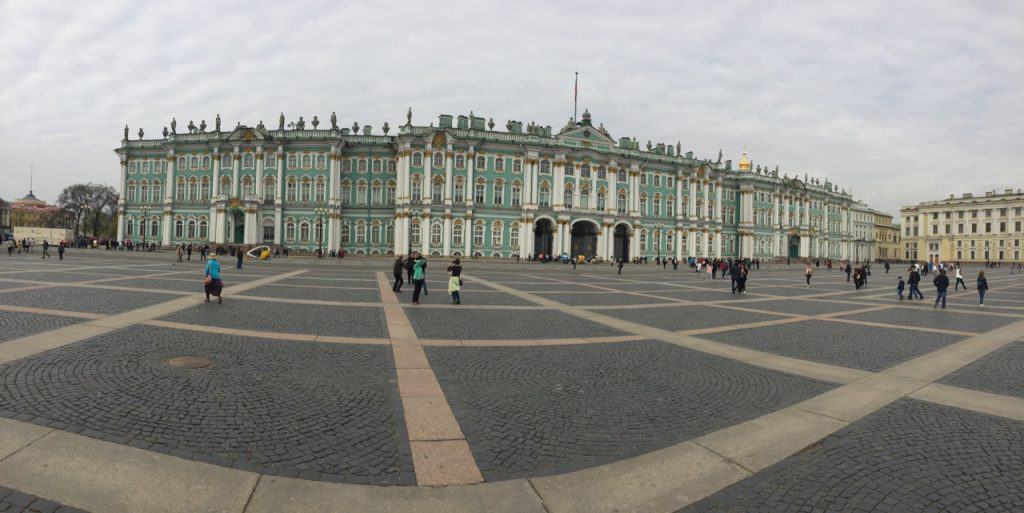



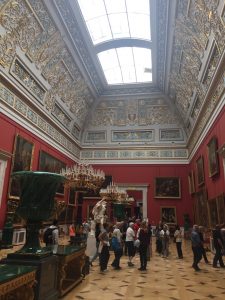

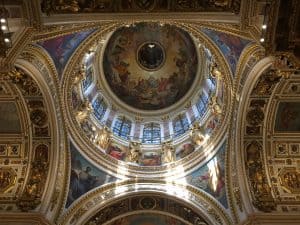
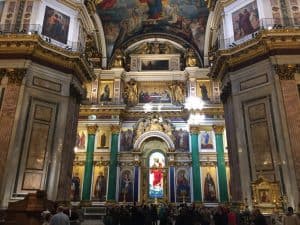
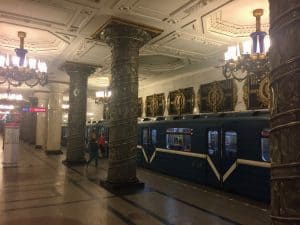
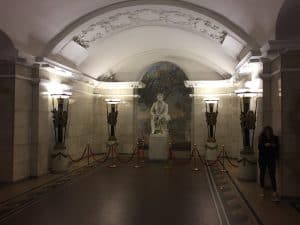
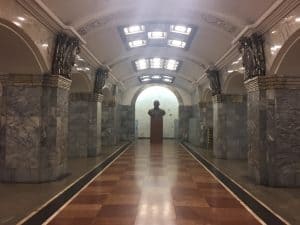
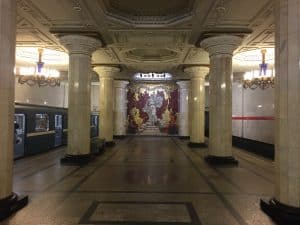
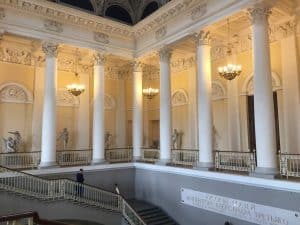
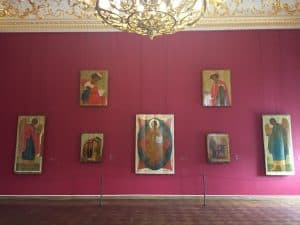
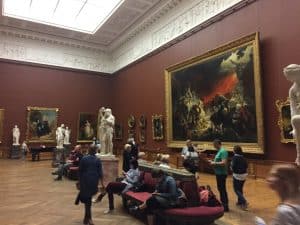
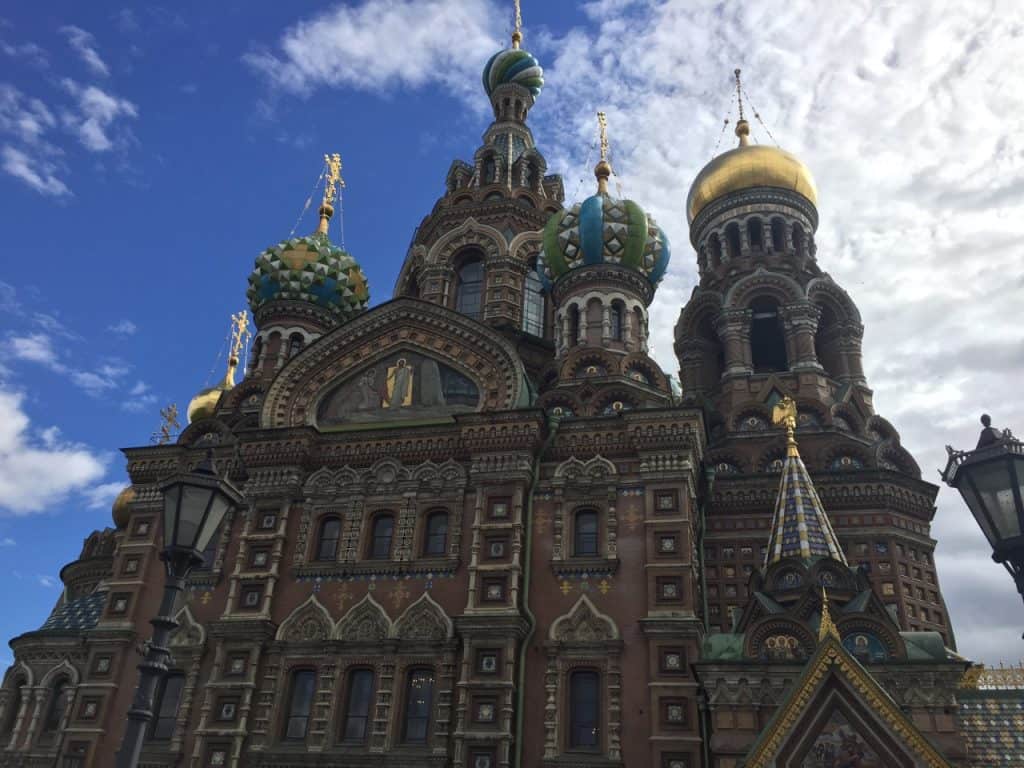

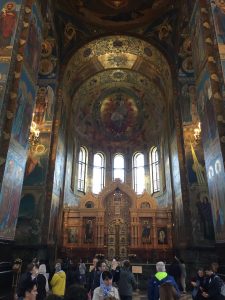
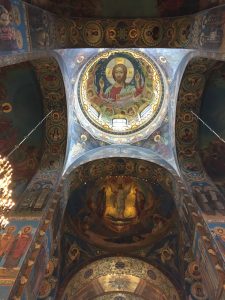
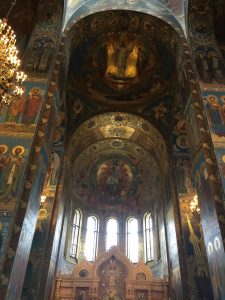
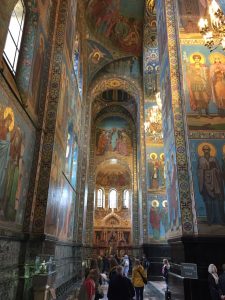

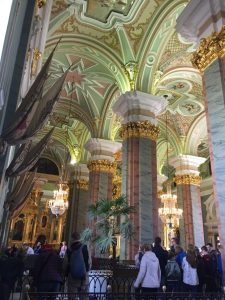


What amazing experiences & information, I can’t wait to hear more on your return.
Much love from us both, to both of you, Alison. XX